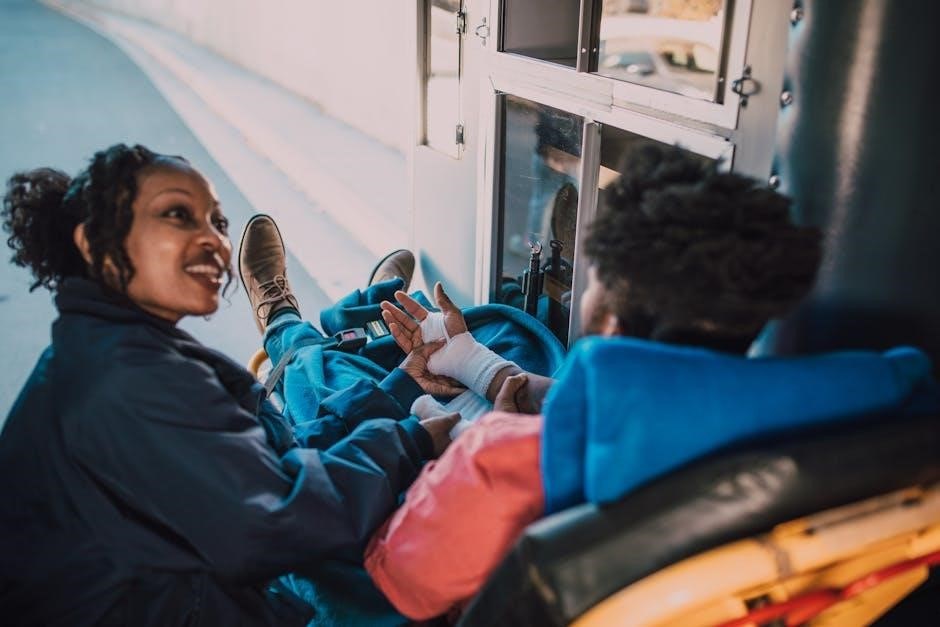Earning the Junior First Aid Badge empowers girls to respond confidently in emergencies. Developed with the American Red Cross, this badge teaches essential first aid skills through hands-on activities and the “Check, Call, Care” framework, preparing juniors to assist others in need.
1.1 Purpose of the Badge
The Junior First Aid Badge is designed to equip girls with essential skills to respond confidently in emergencies. Developed in partnership with the American Red Cross, this badge aims to teach juniors how to provide initial care, understand their role in emergencies, and take responsibility for helping others. By earning this badge, girls gain the knowledge to assess situations, provide basic first aid, and know when to seek professional help. The badge emphasizes the importance of preparedness and compassion, fostering a sense of empowerment and responsibility. It serves as a foundational step in developing lifelong skills to assist others in need, aligning with the tradition of Girl Scouts preparing girls to make a positive impact in their communities.
1.2 Importance of First Aid Training for Juniors
First aid training is crucial for juniors as it equips them with life-saving skills and confidence to act in emergencies. By learning basic care techniques, girls can provide immediate assistance, potentially preventing minor injuries from worsening. This training fosters a sense of responsibility and empathy, encouraging girls to help others in need. Additionally, it teaches valuable decision-making skills, such as knowing when to seek professional help. First aid training also promotes safety awareness, helping juniors identify and prevent hazards in their daily lives. These skills not only benefit individuals but also contribute to the well-being of their families and communities, making first aid training an essential part of a junior’s development and preparation for real-world challenges.

Understanding the Requirements
Earning the Junior First Aid Badge involves completing specific steps like learning emergency basics, creating a first aid kit, and understanding minor injuries, ensuring a comprehensive skill set.
2.1 Overview of the Badge Requirements
The Junior First Aid Badge requires girls to demonstrate a foundational understanding of emergency response and care. The program is designed to equip juniors with essential skills to handle common injuries and illnesses. Key components include learning the “Check, Call, Care” framework, creating a portable first aid kit, and understanding how to respond to minor and serious situations. Girls must also engage with first responders and complete activities that reinforce these skills. The badge emphasizes practical application, ensuring juniors are prepared to assist in real-life scenarios. By completing these steps, participants gain confidence and the ability to make a positive impact in emergencies.
2.2 Steps to Earn the Badge
Earning the Junior First Aid Badge involves completing a series of structured steps designed to build essential skills. First, girls learn the initial steps in an emergency, focusing on the “Check, Call, Care” framework. Next, they engage with first responders to understand professional roles in emergencies. Creating a portable first aid kit is another key step, teaching preparedness. Girls also study minor injuries and illnesses, learning appropriate care. Additionally, they must recognize when a situation requires advanced medical attention. Practical activities, such as role-playing scenarios, reinforce these lessons. By following these steps, juniors gain hands-on experience and confidence to respond effectively in emergencies, ensuring they are well-prepared to assist others in need.
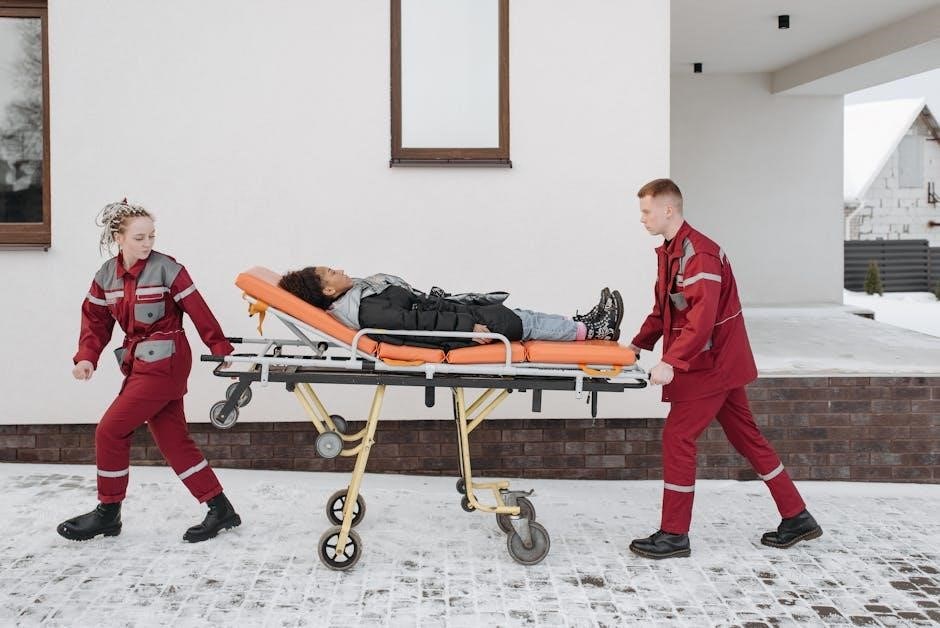
2.3 Age and Grade Eligibility
The Junior First Aid Badge is specifically designed for Girl Scouts in grades 4-5, targeting young learners who are developing their independence and leadership skills. This age group is ideal for introducing foundational first aid concepts, as it aligns with their ability to understand and apply practical skills. The badge requirements are tailored to ensure that juniors can engage actively in hands-on activities and discussions, fostering both their knowledge and confidence. By participating, girls in this grade range gain essential life skills that prepare them to assist in emergencies, both at home and in their communities, while encouraging a sense of responsibility and readiness.

Step-by-Step Badge Requirements
Earning the Junior First Aid Badge involves completing five practical steps, including learning emergency basics, creating a first aid kit, and understanding minor injuries, tailored for juniors.
3.1 Step 1: Learn the First Steps in an Emergency
The first step to earning the Junior First Aid Badge is understanding the initial actions to take in an emergency. Girls learn the “Check, Call, Care” framework, which guides them to assess the situation, contact emergency services, and provide basic care. This step emphasizes recognizing when an emergency occurs and staying calm. Activities include creating posters to visualize the “Check, Call, Care” process and discussing emergency scenarios with adults. The goal is to build confidence and preparedness, ensuring juniors know how to respond safely and effectively. This foundational step sets the stage for more advanced first aid skills in subsequent steps.
3.2 Step 2: Talk to First Responders
In this step, Junior Girl Scouts engage with first responders to understand their roles and gain insights into emergency situations. Girls participate in activities such as visiting hospitals or attending Teddy Bear Clinics, where they interact with medical professionals. They learn how to communicate effectively with first responders and understand the importance of their work. This step fosters respect for emergency services and prepares juniors to collaborate with professionals in real-life scenarios. By asking questions and observing firsthand, girls develop a deeper understanding of how to interact with responders during an emergency, enhancing their confidence and preparedness. This interaction is a key part of building their first aid knowledge and skills.
3.3 Step 3: Make a Portable First Aid Kit
In this step, juniors create a portable first aid kit, learning to identify and organize essential items like bandages, antiseptic wipes, gloves, and a first aid manual. Girls are encouraged to customize their kits based on common injuries and personal needs. The activity emphasizes the importance of having a well-stocked kit readily available for emergencies. By assembling their own kits, girls gain hands-on experience in preparedness and understand the role of each item in providing care. This step also teaches organization and maintenance tips, ensuring the kit remains useful and easily accessible. Creating a first aid kit is a practical skill that reinforces the principles of emergency readiness.
3.4 Step 4: Understand Minor Injuries and Illnesses
This step focuses on helping juniors recognize and respond to common minor injuries and illnesses, such as cuts, burns, and sprains. Girls learn basic care techniques, including proper wound cleaning and bandaging, and how to monitor for signs of more serious conditions. The activity encourages girls to think critically about when to seek professional help. By understanding these fundamentals, juniors build confidence in their ability to provide effective first aid. This step also includes discussions on prevention strategies to avoid accidents and promote overall health and safety. Mastery of these skills is crucial for empowering girls to act responsibly in real-life situations.
3.5 Step 5: Recognize When a Problem is Serious
This step teaches juniors to identify when an injury or illness requires immediate professional medical attention. Girls learn to recognize serious symptoms, such as severe bleeding, difficulty breathing, or loss of consciousness, and understand the importance of calling 911. They also practice staying calm and providing care until help arrives. Activities include role-playing scenarios where girls assess situations and decide the appropriate response. This step emphasizes the critical difference between minor issues that can be treated at home and serious conditions that need urgent care. By mastering this skill, juniors gain the confidence to make life-saving decisions in critical moments. This understanding is vital for ensuring safety and proper care in emergencies.
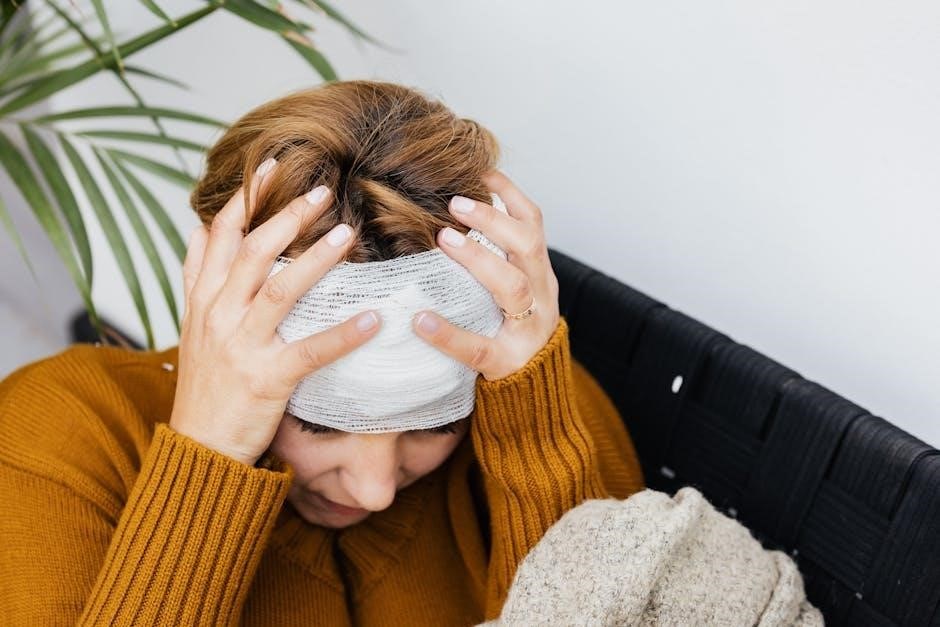
The “Check, Call, Care” Framework
The “Check, Call, Care” framework teaches juniors to assess emergencies, contact help when needed, and provide basic care until professional assistance arrives, ensuring effective and timely responses.
4.1 What is the “Check, Call, Care” Approach?
The “Check, Call, Care” approach is a straightforward method taught in the Junior First Aid Badge program. It guides young participants to assess an emergency situation, ensuring safety for both the responder and the individual in need. The first step, “Check,” involves evaluating the scene to identify potential dangers and determining the condition of the injured or ill person. Next, “Call” emphasizes the importance of seeking professional help by contacting emergency services or alerting a trusted adult. Finally, “Care” focuses on providing appropriate and immediate assistance, such as applying bandages or administering basic first aid, while awaiting further help. This structured approach ensures that juniors can respond confidently and effectively in emergencies, equipping them with vital life-saving skills.
4.2 How to Apply “Check, Call, Care” in Real-Life Scenarios
The “Check, Call, Care” framework is applied in emergencies by first assessing the situation for safety and identifying the extent of injuries or illnesses. In “Check,” juniors learn to evaluate the scene, ensure their own safety, and determine the condition of the person in need. “Call” involves contacting emergency services or a trusted adult for professional assistance. Finally, “Care” focuses on providing immediate, age-appropriate aid, such as applying band-aids, administering basic first aid, or comforting the individual until help arrives. This method empowers juniors to respond confidently in real-life situations, from minor injuries to more serious incidents, teaching them to prioritize safety and take actionable steps to help others effectively.
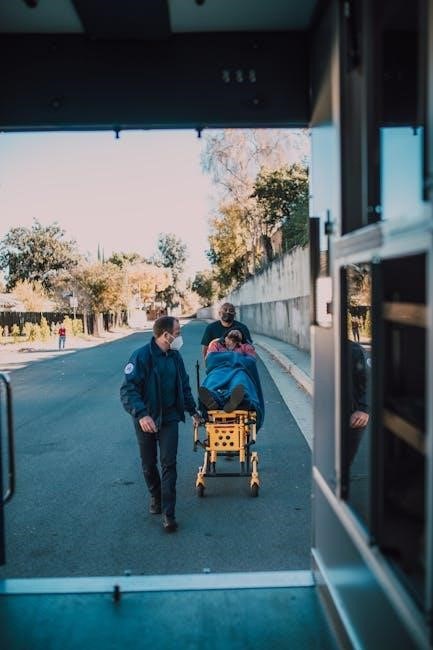
Creating a First Aid Kit
A well-stocked first aid kit is essential for handling minor injuries. Include band-aids, antiseptics, gloves, and gauze. Organize items for easy access and refill supplies regularly.
5;1 Essential Items for a Portable First Aid Kit
A portable first aid kit should include band-aids, gauze pads, antiseptic wipes, disposable gloves, scissors, tweezers, and a first aid manual. These items help treat minor injuries like cuts and scrapes. Adding a small flashlight and whistle can assist in emergencies. Ensure all supplies are child-friendly and easy to use. Check expiration dates of antiseptics and replace as needed. Store the kit in a durable, easy-to-carry container. Customize it based on common injuries or allergies within your group. Regularly inspect and replenish supplies to maintain readiness. This kit empowers juniors to provide immediate care while waiting for professional help.
5.2 How to Organize and Maintain the Kit
Organize the portable first aid kit by categorizing supplies, such as bandages, antiseptics, and tools, in separate compartments. Regularly inspect items for expiration dates and damage, replacing them as needed. Store the kit in an accessible, dry place to prevent damage. Teach juniors to clean and replenish supplies after each use. Encourage them to customize the kit based on common injuries or allergies. Schedule periodic checks to ensure all items are up-to-date and accounted for. Involving juniors in maintenance fosters responsibility and preparedness. Always secure the kit to avoid accidental tampering. Keep a small checklist inside to track inventory and remind users to restock. Proper organization ensures the kit remains reliable in emergencies.
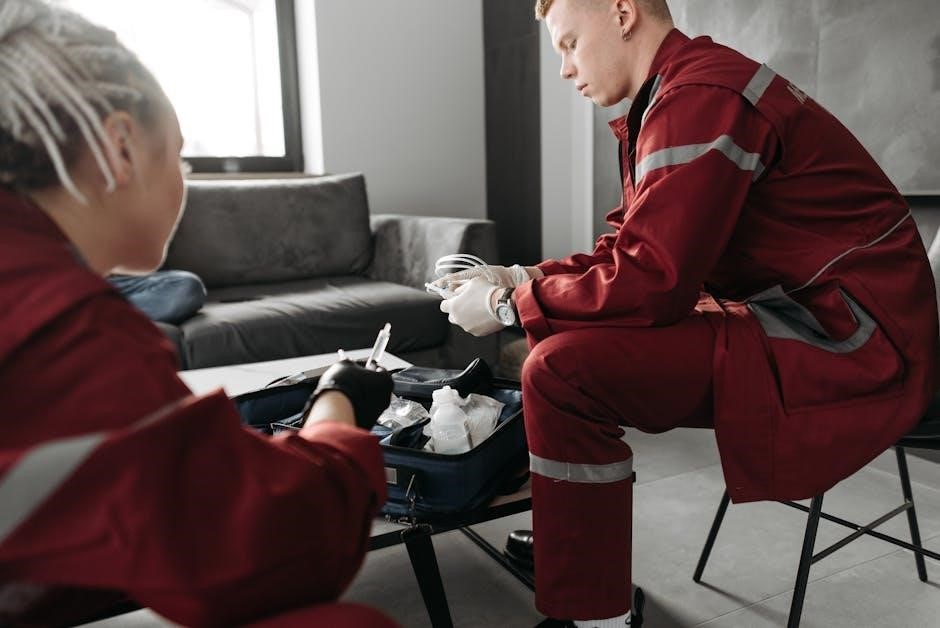
Common Injuries and Prevention
Common injuries include cuts, burns, and scrapes. Prevention involves supervision, using safety gear, and identifying hazards. Teach juniors to recognize risks and take proactive safety measures.
6.1 Identifying Common Injuries in Children
Children often experience minor injuries like cuts, scrapes, burns, and bruises. These typically occur during play or accidents at home. It’s important to recognize the severity of each injury to provide appropriate care. For example, minor cuts can be treated with cleaning and bandaging, while deeper wounds may require professional attention. Burns should be cooled immediately, and blisters protected. Understanding these common injuries helps juniors respond effectively and prevent infections or further harm. Teaching girls to assess injuries calmly and apply basic first aid promotes confidence and readiness in emergencies. This knowledge is crucial for keeping themselves and others safe, aligning with the skills taught in the Junior First Aid Badge program.
6.2 Safety Tips to Prevent Accidents at Home
Preventing accidents at home is a key part of first aid preparedness. Ensure furniture and heavy objects are securely anchored to avoid tipping. Keep medications and cleaning supplies out of reach of children. Install safety gates at stairs and secure hot appliances. Regularly inspect toys for sharp edges or small parts. Teach children to avoid playing near hot surfaces or electrical outlets. Supervise bath time to prevent slips and ensure water temperature is safe. Store emergency numbers near every phone. By implementing these safety tips, juniors can help create a safer environment, reducing the risk of injuries and reinforcing the skills learned while earning the Junior First Aid Badge.
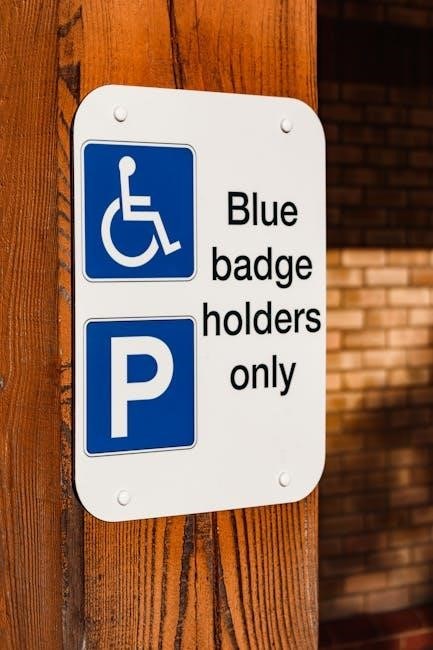
Engaging Activities for Learning
Engage juniors with interactive activities like poster creation, role-playing, and home safety checks. These hands-on experiences foster creativity, real-life application, and confidence in first aid skills.
7.1 Poster Creation: Visualizing “Check, Call, Care”
Poster creation is a fun and creative way for juniors to visualize the “Check, Call, Care” framework. Girls can design posters illustrating each step, using images and slogans to depict checking the scene for safety, calling for help, and providing appropriate care. This activity encourages teamwork and reinforces the key principles of first aid. By breaking down the process visually, posters help juniors remember the steps clearly. Leaders can display these posters in meeting spaces or share them with the community to spread awareness. This engaging project makes learning interactive and memorable, aligning perfectly with the badge requirements.
7.2 Role-Playing Emergency Scenarios
Role-playing emergency scenarios is an interactive way for juniors to practice first aid skills. Girls can act out situations like treating minor injuries or responding to serious conditions, following the “Check, Call, Care” framework. This hands-on approach builds confidence and helps juniors understand how to apply their knowledge in real-life emergencies. Leaders can guide the scenarios, ensuring safety and accuracy. By simulating different emergencies, girls learn to stay calm and make quick decisions. Role-playing also fosters teamwork and communication, essential for effective first aid. This engaging activity aligns with badge requirements and prepares juniors to handle a variety of situations responsibly.
7.3 Household Safety Checks
Household safety checks are a practical way for juniors to identify and address potential hazards at home. Girls learn to create a checklist of common safety dangers, such as sharp objects or electrical outlets, and ways to prevent accidents. This activity aligns with badge requirements by teaching injury prevention and promoting preparedness. By walking through their homes, girls develop observational skills and a sense of responsibility. They also learn how to educate family members about safety measures. This hands-on approach makes safety awareness a habit and empowers juniors to create a safer environment. A downloadable PDF guide is available to assist troop leaders in organizing this activity effectively.
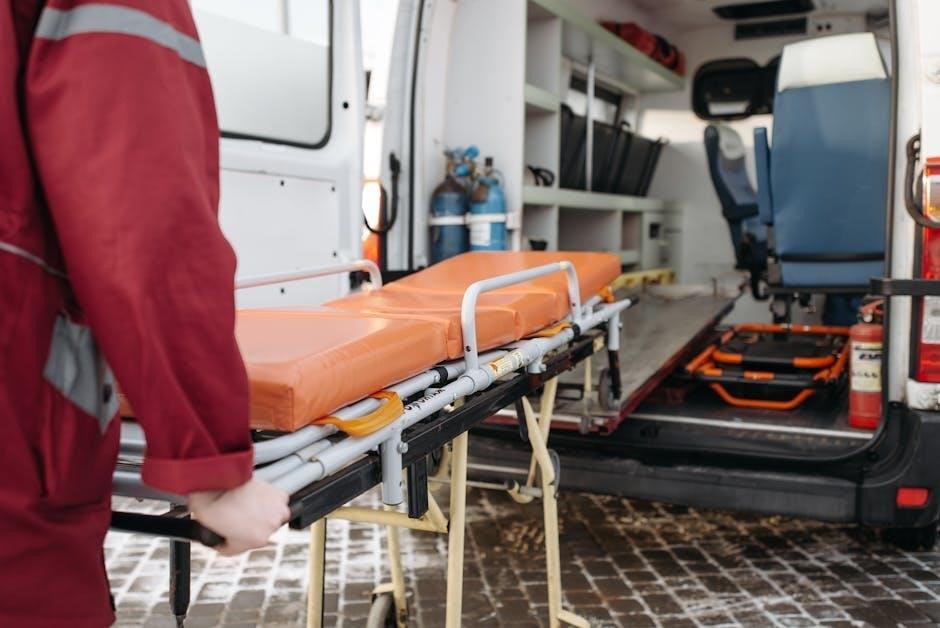
Resources and Guides
This section offers a downloadable PDF workbook, volunteer toolkit, and partnership resources with the American Red Cross to support juniors in earning their First Aid Badge.
8.1 Downloadable PDF Workbook for Badge Requirements
The downloadable PDF workbook simplifies the process for juniors to earn their First Aid Badge. It outlines each requirement clearly, offering step-by-step instructions and activities. The workbook includes checklists, space for notes, and visual aids to make learning engaging. Girls can track their progress easily, ensuring they complete all necessary tasks. Leaders can also use it to guide troop meetings effectively. Available online, this resource is a comprehensive tool for a successful badge-earning experience.
8.2 Volunteer Toolkit for Troop Leaders
The Volunteer Toolkit provides troop leaders with a comprehensive guide to help juniors earn their First Aid Badge. It includes detailed meeting plans, activity scripts, and material lists. Leaders can access tips for facilitating discussions and hands-on activities, ensuring girls meet all badge requirements. The toolkit also offers flexible options to adapt activities based on troop needs and available resources. Available as a downloadable PDF, it streamlines planning and execution, making it easier for leaders to guide their troop through the badge-earning process efficiently.
8.3 Partnership with the American Red Cross
The Junior First Aid Badge is developed in collaboration with the American Red Cross, ensuring evidence-based and reliable first aid training. This partnership enhances the curriculum’s credibility, providing girls with accurate and up-to-date information. The Red Cross contributes expertise in emergency response, making the badge requirements both educational and practical. Through this partnership, juniors gain essential life-saving skills, fostering confidence and preparedness. The collaboration also emphasizes the importance of community involvement and real-world application, aligning with the Girl Scouts’ mission to empower girls with valuable life skills.
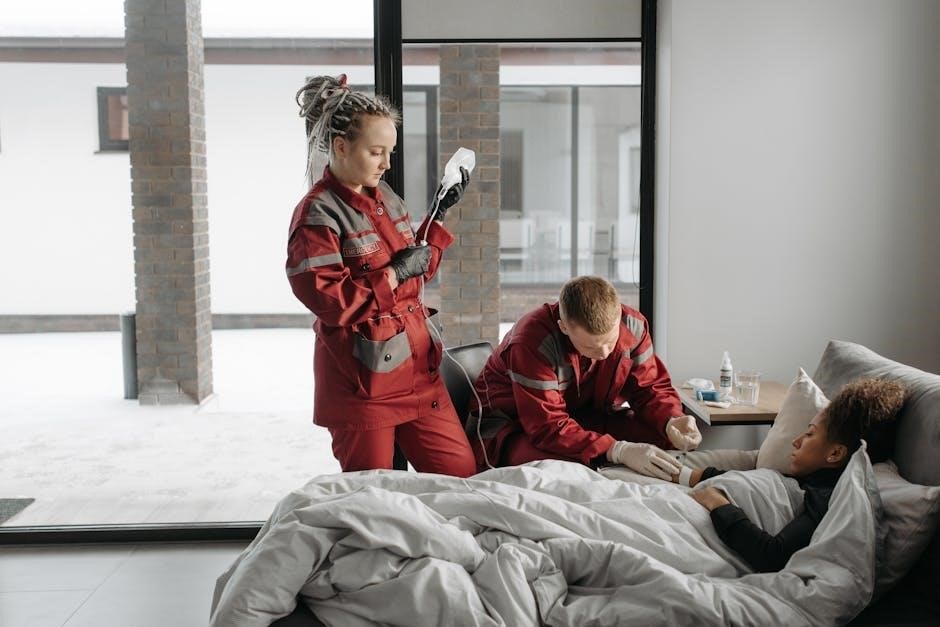
Real-Life Applications of the Badge
Juniors apply their first aid skills in real-life scenarios, such as Teddy Bear Clinics and hospital visits, gaining hands-on experience and confidence in emergency situations.
9.1 Junior Girl Scouts Earning the Badge at Hospitals
Junior Girl Scouts engage in hands-on learning at hospitals, interacting with healthcare professionals and participating in simulations. These experiences provide practical insight into emergency response and patient care, enhancing their first aid skills and confidence. By earning the badge in a real-world setting, girls develop a deeper understanding of medical scenarios and the importance of quick, effective actions. Hospitals offer a unique environment where juniors can apply the “Check, Call, Care” framework, making the learning experience both impactful and memorable. This collaboration fosters a sense of responsibility and preparedness, equipping girls to handle emergencies with competence.
9;2 Teddy Bear Clinics as Hands-On Learning Experiences
Teddy Bear Clinics provide a fun and engaging way for Junior Girl Scouts to practice first aid skills. Girls bring their stuffed animals to simulate real-life scenarios, such as cleaning wounds, bandaging, and comforting their “patients.” These activities, often hosted at hospitals or clinics, allow juniors to interact with healthcare professionals, gaining insights into medical procedures. The hands-on experience helps build confidence and familiarity with first aid techniques. By caring for their stuffed animals, girls learn to assess injuries, prioritize care, and understand when professional help is needed. This playful approach makes complex concepts accessible and prepares juniors to apply their skills in real emergencies.
Earning the Junior First Aid Badge equips girls with vital skills to respond confidently in emergencies, fostering a lifelong commitment to helping others and staying prepared.
10.1 The Impact of Earning the Junior First Aid Badge
Earning the Junior First Aid Badge empowers girls with confidence and essential skills to respond in emergencies. By mastering the “Check, Call, Care” framework, juniors gain the ability to provide immediate care and seek help when needed. This badge fosters a sense of responsibility and preparedness, enabling girls to contribute positively to their communities. The skills learned, such as identifying serious injuries and creating first aid kits, stay with them for a lifetime. Partnering with the American Red Cross ensures the content is reliable and up-to-date. Ultimately, this badge not only teaches lifesaving techniques but also encourages girls to take an active role in helping others, creating a lasting impact on their lives and those around them.
10;2 Encouraging Lifelong Emergency Preparedness
Earning the Junior First Aid Badge fosters a mindset of preparedness, equipping girls with skills that extend beyond the badge itself. By learning to identify emergencies, create first aid kits, and understand when professional help is needed, juniors develop habits that last a lifetime. The “Check, Call, Care” framework becomes second nature, enabling them to act calmly in crises. Interactive activities, like household safety checks and role-playing, reinforce these lessons, making preparedness a part of their daily lives. Encouraging girls to share safety tips with family and friends further amplifies the impact, creating a ripple effect of readiness in their communities. This badge not only prepares girls for emergencies but also instills confidence to take charge, ensuring they are always ready to help.
